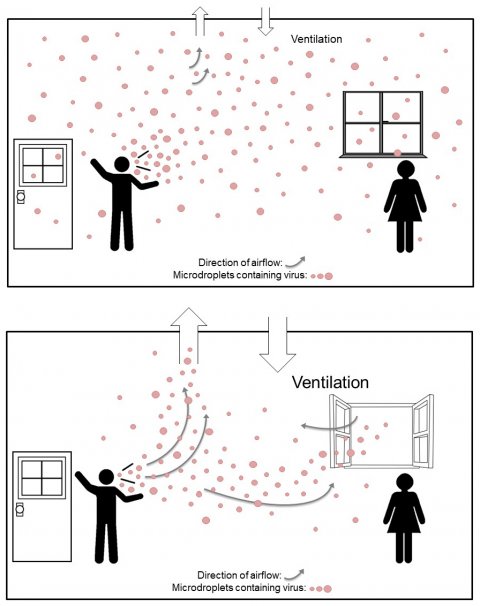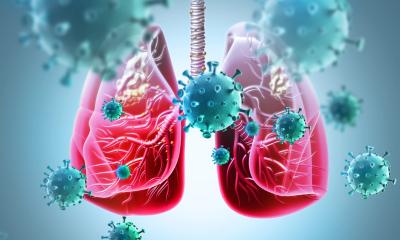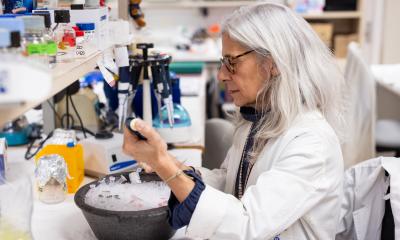News • Airborne droplet travel distance
Why you shouldn't underestimate the reach of COVID-19
A plea issued by 239 scientists from around the world to recognise and mitigate airborne transmission of COVID-19 addressed to international health authorities is published in the journal Clinical Infectious Diseases.
Led by internationally recognised air quality and health expert Professor Lidia Morawska from Queensland University of Technology (QUT), the appeal is to address the overwhelming research finding that an infected person exhales airborne virus droplets when breathing and talking that can travel further than the current 1.5m social distance requirement.
Recommended article

News • COVID-19 prevention
Social distancing: does it work?
The number of cases tested positive for COVID-19 initially grew exponentially in China, but then slowed down. Dirk Brockmann, professor at Humboldt-Universität zu Berlin (HU) and project group leader at the Robert Koch-Institut (RKI), and his postdoc Benjamin F. Maier have developed a diffusion model that takes into account the effect of social distancing and other measures to explain this…

Image source: Morawska et al.; Clinical Infectious Diseases 2020 (CC BY NC ND 4.0)
“Studies by the signatories and other scientists have demonstrated beyond any reasonable doubt that viruses are exhaled in microdroplets small enough to remain aloft in the air and pose a risk of exposure beyond 1 to 2 meters by an infected person,” Professor Morawska, director of the International Air Quality and Health Laboratory, said. “At typical indoor air velocities, a 5-micron droplet will travel tens of metres, much greater than the scale of a typical room while settling from a height of 1.5m above the floor.”
Signatories to the appeal come from many disciplines including different areas of science and engineering, including virology, aerosol physics, flow dynamics, exposure and epidemiology, medicine, and building engineering. “Expertise in many science and engineering areas enables us to understand the characteristics and mechanisms behind the generation of respiratory microdroplets, how viruses survive in these microdroplets and how airflow patterns carry microdroplets in buildings,” Professor Morawska said.
“The measures that need to be taken to mitigate airborne transmission include:
- Provide sufficient and effective ventilation (supply clean outdoor air, minimize recirculating air) particularly in public buildings, workplace environments, schools, hospitals, and aged care homes.
- Supplement general ventilation with airborne infection controls such as local exhaust, high efficiency air filtration, and germicidal ultraviolet lights.
- Avoid overcrowding, particularly in public transport and public buildings.
“These are practical and can be easily implemented and many are not costly. For example, simple steps such as opening both doors and windows can dramatically increase air flow rates in many buildings.
We are concerned that people may think they are fully protected by following the current recommendations, but in fact, additional airborne precautions are needed to further reduce the spread of the virus
Lidia Morawska
“Numerous health authorities currently focus on hand-washing, maintaining social distancing, and droplet precautions. Hand-washing and social distancing are appropriate, but it is view, insufficient to provide protection from virus-carrying respiratory microdroplets released into the air by infected people.”
Professor Morawska said several retrospective studies of the SARS epidemic had shown that airborne transmission was the most likely mechanism that explained the spatial pattern of infections. “For example, a recent study analysed the data and video records in a restaurant where three separate groups of diners contracted COVID-19, observed no evidence of direct or indirect contact between the three groups, but modelled how the transmission occurred through the air. We are concerned that people may think they are fully protected by following the current recommendations, but in fact, additional airborne precautions are needed to further reduce the spread of the virus.”
Source: Queensland University of Technology (QUT)
07.07.2020











